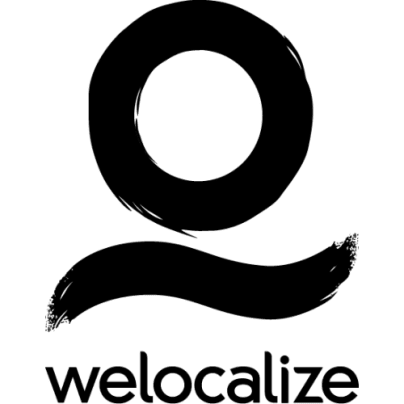As planned, the 2022 EEO-1 reporting period opened April 12. But this year, a certain hopefulness – regarding the greater inclusion of LGBTQ+ people – hangs around the annual process.
Six months prior, Cassie Whitlock, director of HR at BambooHR, made waves with her op-ed calling for the U.S. Equal Employment Opportunity Commission to add a nonbinary gender option to its EEO-1 form. Change.org ignited the conversation: in May 2021, Change.org employees petitioned BambooHR to offer more gender options in its HR software.
BambooHR obliged, acting on additional feedback from trans and nonbinary users. Whitlock took to Quartz at Work late last year to outline the remaining issue: that the U.S. government requires qualifying organizations to submit demographic data, including gender, about its employees. The options are either female or male, and HR professionals are often forced to draw an inappropriate conclusion about an employee's gender, according to Whitlock.
Following Whitlock's op-ed, HR Dive reached out to Christine Saah Nazer, spokesperson for the EEOC's Office of Communications & Legislative Affairs, regarding the possibility of a third gender option for nonbinary folks. Nazer told HR Dive that the commission would be exploring expanded ways to collect gender information on the EEO-1 and other forms.
Fast forward to March 29, a similar question was raised at SHRM's Workplace Policy Conference. During a Q&A session, a participant asked EEOC Vice Chair Jocelyn Samuels and Commissioner Andrea Lucas about trans and nonbinary inclusion in EEOC processes.
Two days later, the EEOC debuted an "X" gender marker on its charge form, in honor of Trans Day of Visibility. The EEO-1 options, however, remain binary. Notably, Republican commissioners outnumber Democrats at EEOC – and EEO-1 changes require a commission vote, according to one attorney – but that control may soon shift.
Whitlock spoke to HR Dive about the need for stakeholders to keep pressure on the agency, as well as what HR professionals can do today to support nonbinary colleagues.
This interview has been edited for clarity and brevity.
HR Dive: What prompted you to write an op-ed about a lack of nonbinary representation EEO-1 reporting ?
CASSIE WHITLOCK: It's been an important conversation for quite a while in the HR space, and it's something that we've been talking about within our product. HR has this really unique work balance that they have to strike – legal and tax requirements that require us to identify people according to government registrations and social security numbers, and also, individuals, and how they want to be greeted and treated and known in the workspace.
How do HR professionals – and even managers – navigate those two worlds, without creating uncomfortable situations for individuals?
The form allows for additional gender reporting in the comment section. But when you care about representing that group, that doesn't feel sufficient. That was the big conversation point for us and why we wanted to raise the conversation more broadly.
I'm nonbinary and prior to your op-ed, I didn't realize HR professionals had to either guess or have an uncomfortable conversation asking workers how they want to be misgendered in EEO-1 reporting.
Yeah, exactly. That's not a great conversation to have. It's not even an appropriate conversation to have.
The EEOC has a great mission: They're there to help build equitable and inclusive experiences in the workplace, but also to prevent and avoid discrimination. And I think we all care about that.
This form is accidentally putting HR professionals or managers trying to fulfill this reporting requirement in a very uncomfortable situation. So I would love to have a formal remedy to that: We both remove the HR pain point, but more importantly, better represent that group of individuals out in the workforce and make sure that data helps support the mission of the EEOC.
In your experience, how are HR pros approaching the process for nonbinary employees?
There's going to be a spectrum. You'll see people who are a little bit more passive, in the way that you cannot mandate that an employee self-identify, for obvious reasons. For the reporting requirements, if you are a covered entity, you have to report it.
When I say passive, you might have an HR professional just doing their best to guess for the reporting purposes. You could have someone somewhere in the middle, who's reaching out to their workforce and saying, "We're getting ready for our reporting. Please go into the system and make sure that you've appropriately self-identified."
And you could go all the way to the other extreme like you mentioned, where you would actually go have a conversation with an individual – to better understand, if they still haven't self-identified – how they would like to be represented in the reports.
There's no one right answer. Hopefully, as an HR professional or as a manager, you're building relationships of respect and trust, so that you can find the best way to navigate that need and opportunity.
I can see how such conversations could be super awkward and uncomfortable, especially if you haven't been building in that psychological safety and culture of trust leading up to it. There's also so much emotional labor and energy that goes into worrying about misgendering and handling the pronouns conversation.
Last fall, I used your article on trans talent and the challenges of background and credit checks on our team to have a conversation about the tension between legal things that we have to do and the impact those things have on that day-to-day employee experience.
For example, do you have a default setting in your system that when you run reports, it's pulling the employee's correct name, so that you're not accidentally calling somebody by a legal name they don't use?
I went through a divorce and I had negative feelings about the name I used in that marriage. If someone called me that name, I would startle and it wasn't a pleasant experience for me. The same thing can be true in the LGBTQIA+ community or specifically for trans talent if they have had a transition or a name change.
Since publishing this op-ed, have you received any feedback on your perspective?
I've only heard positive things. Because this problem has existed for a long time – people appreciate that this issue is being talked about and that we're bringing it forward























